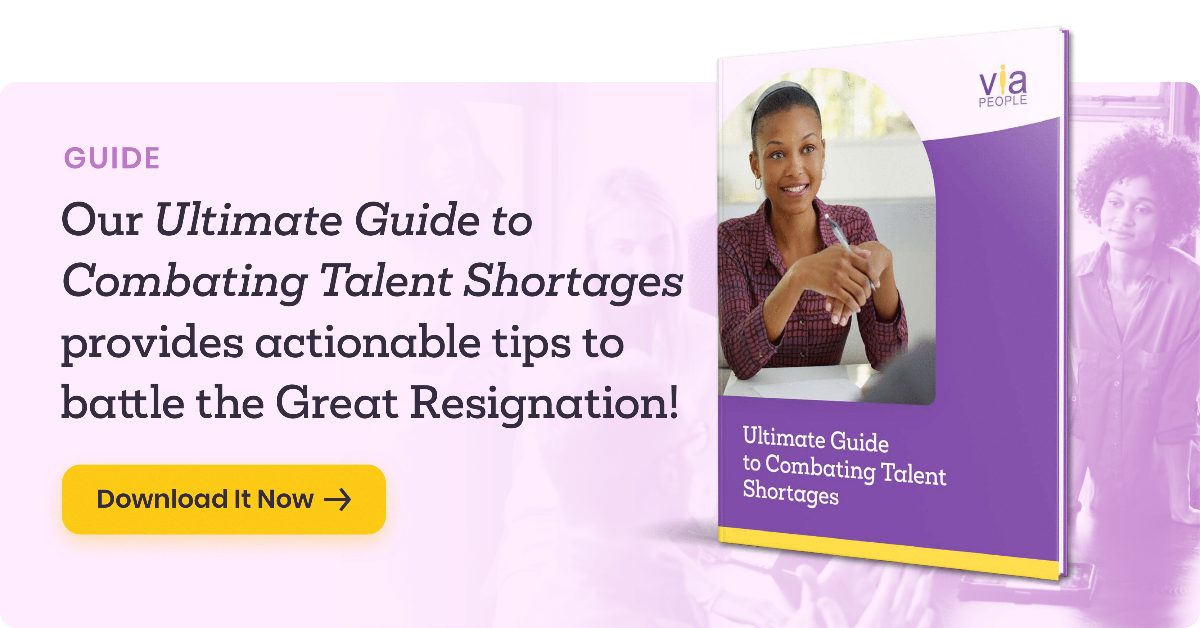Key Components of a Successful People Strategy
 A people strategy is an important element of any business plan. Learn more about what a people strategy is and the five key components that every successful people strategy should include.
A people strategy is an important element of any business plan. Learn more about what a people strategy is and the five key components that every successful people strategy should include.
What Is a People Strategy?
A people strategy is an organization’s carefully planned and executed approach to recruiting, retaining, and developing talent in alignment with their overall business objectives. In other words, it’s the critical people component of your overall business plan.
You may think of your business as its own entity, but in reality, businesses are made up of people. So your business’s success depends in large part on the success of your people strategy. A people strategy isn’t just a nice thing to have to make your employees happy—a people strategy is a business strategy, and it can help employees, managers, and your company as a whole thrive.
People Strategy vs. HR Strategy
You may hear a similar term—HR strategy—but this isn’t quite the same as a people strategy. HR strategy tends to refer to the logistics involved in managing employees, including the policies and procedures involved. A people strategy should go beyond these logistics and include an emphasis on the culture and employee relationships you foster and the ways you empower employees to succeed.
Both an HR strategy and a people strategy are important aspects of how you successfully manage employees in your organization.
→ A people strategy is a crucial part of maintaining high retention rates. Learn more about how to fight turnover and improve employee retention in our Ultimate Guide to Combating Talent Shortages.
The Importance of a People Strategy
Why is it important to have a clear people strategy in place? You don’t want to leave the success of your organizational talent up to chance. Proactively managing this crucial aspect of your business can help you and your employees in several key ways:
Empowering Your Employees to Achieve Their Best
Since people strategies help employees thrive, they can encourage employees to operate at peak performance. What company doesn’t want to see their employees become more productive and engaged? A boost in employee performance is a boost to your company’s performance.
Fostering a Positive Culture for Employees
Are you struggling to hold onto employees? Your corporate culture may be to blame. Research shows a negative corporate culture is more than 10 times more influential than pay in motivating employees to leave their jobs. A successful people strategy will help your employees feel valued and will create a culture they want to be part of. This can improve employee morale, engagement, and retention.
Meeting Your Company’s Talent Needs
Especially in the midst of serious talent shortages, you need a solid strategy for how you will continuously meet your company’s talent needs. Fortunately, a people strategy can help you stay on top of your current and future talent needs so you can proactively recruit and foster talent from within to ensure you have the right people in the right positions to contribute to your company’s success.
Supporting Your Long-Term Business Strategy
A people strategy can also help you fulfill your company’s short- and long-term goals. As the chief human resources officer at Spotify explains, developing a people strategy involves answering two big-picture questions about your business as a whole: “Where are we going?” and “How will we get there?” Being people-first doesn’t have to come at the expense of your business. In fact, just the opposite is true—helping your employees thrive can, in turn, help your company thrive.
Five Key Elements of an Effective People Strategy
Now that you know how crucial an effective people strategy is to your company’s success, let’s look at five key elements that should be a part of every people strategy.
1. Understanding Your Talent Needs
First, your people management strategy should clearly define your talent needs. Are you under or over capacity in any departments? Do you need to create new roles to fulfill unmet needs? Make sure you talk with department heads and managers across your organization to get an accurate picture of talent needs.
In addition to assessing your current needs, you must also anticipate your future needs based on the trajectory of your company as a whole and of individual departments. As Harvard Business Review points out, it’s common to ask prospective hires, “Where do you see yourself in five years?” However, few managers have considered what their five-year talent strategy looks like. Consider how your evolving business goals and trajectory will affect your talent needs, so you can start preparing now.
2. Having the Right Personnel on Staff
Once you know your talent needs, you need to make sure those needs are met. There are two main ways of going about this. One is recruiting new employees. If you’re understaffed, recruiting is a must. However, you should ensure your recruitment methods align well with your people strategy. A 2021 survey asked recruiters about their top priorities for the next 12 months, and the most common answer was improving the quality of new hires. Don’t settle for anything but the best fit for each role.
The other approach is to develop talent from within. You may have untapped potential right there in your organization. If your talent needs are changing, identify the employees who are flexible and are willing to reskill to take on other roles before simply letting them go and recruiting new candidates. Ultimately, having the right people in the right roles is key to your company’s success.
3. Keeping Employees Engaged
According to Gallup, just 36 percent of employees in the U.S. are actually engaged at work. That’s a lot of employees who are generally disinterested or are actively disengaged. Among those who are actively disengaged, nearly three-quarters are looking to change jobs. If you want to improve employee morale, productivity, and retention, you need to focus on employee engagement.
Your people strategy should outline the ways you intend to do that. What steps are managers taking to build strong relationships and create a positive workplace culture that drives engagement? One way to keep employees engaged is by offering more frequent performance feedback as opposed to just an annual review. Employees don’t want to feel like the work they’re doing goes unseen—they want frequent words of appreciation and encouragement along with constructive criticism to help them grow.
4. Managing Employee Performance
Managing employee performance is a major component of any effective people strategy.
Effectively managing performance can contribute to engagement and help you get the most out of your employees. Performance management strategies can involve many things, such as:
- Helping employees set goals and track their progress
- Providing accurate, unbiased performance reviews
- Creating development plans to facilitate growth
- Providing ongoing real-time feedback
- Carefully recording performance data and using it to make informed decisions
Having the right people in the right roles and ensuring they’re engaged is an excellent start, but strategically managing their performance to help each employee achieve their best is a significant way to help your company succeed.
5. Developing Talent for Future Needs
As you help employees succeed in their current roles, you should also have an eye toward the future. According to McKinsey, nearly nine in 10 managers and executives say they’re facing skill gaps or expect these gaps to develop within the next five years. Stay on top of your needs by helping employees develop the skills they need for success now and in the future.
Offer professional development opportunities to help employees grow their abilities and sharpen their skills. These opportunities can also help you improve employee engagement and retention. You should also use succession planning to identify which employees are poised to take on leadership roles in the future.
Strategize for Success
A winning people strategy should be a major part of your company’s overall business plan. Understanding and meeting your talent needs, keeping employees engaged, implementing performance management strategies, and developing talent are all ways you can help your employees and your company thrive.
Want to learn more about meeting your talent needs amid skills shortages and the “Great Resignation?” Download the Ultimate Guide to Combating Talent Shortages.
Share this
You May Also Like
These Related Stories

Three Reasons Employees Are Leaving Their Jobs and Three Strategies to Improve Employee Retention

Talent Management Strategies to Combat the Global Talent Crisis


